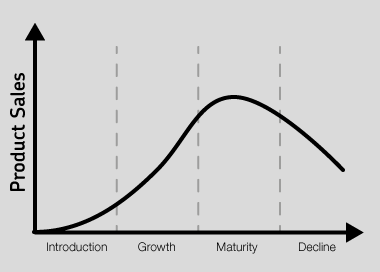Specifications that use this resource:
Teaching guide: the product lifecycle
Use this teaching guide in the classroom to engage your students, contextualise the model/theory in real-world business and prepare them for the exam.
Section 3.3.4 Making marketing decisions.
Overview
This model sets out the typical stages that sales of product may go through over time. There are different versions of the model but the stages include:
- Development: this is what happens as the product idea is turned into a reality. Money will be invested developing, testing and trialling products. Many product ideas will never actually make it to launch. This is a time when there are likely to be relatively high outflows with no money coming in yet.
- Launch: this is when the product is put on to the market. It may take time to get distributors and for the product and brand to develop.
- Growth: this is when sales are growing fast as the product becomes better known and distribution increases.
- Maturity: sale growth now slows and the business will start to look ahead and decide what action to take.
- Decline: this is where sales fall.
Model/theory

The purpose of the model is simply to identify typical stages of a product over time. How long each state lasts will vary – for example, a film may reach growth within days of being launched whereas some designs may take time before becoming fashionable.
By recognising that sales will change over time managers can think about how they will change the marketing mix at different stages. For example, the price may need to be lowered when the product is at the maturity phase to maintain sales. Distribution may need to increase during the growth phase to reach more customers.
However, managers must interpret data carefully; for example, a fall in sales may be the start of the decline phase or may simply be a temporary fall.
When you can use this
- To show how the marketing mix needs to be adapted at different stages you could get students to identify how it might change and why.
- To consider the different possible life cycles of different products: a new film, a ‘fad’ toy, a new pharmaceutical product, a new car. This is useful to highlight how products and markets vary considerably which is useful for application.
- To explore the relationship between marketing and other functions eg if the business has the capacity to meet the highest level of expected sales this means there will be excess capacity in the earlier stages of the life cycle; what are the implications of this?
Where it's been used
- Q21, A-level paper 1, SAM set 1.
- Q15.2, AS paper 1, SAM set 2.